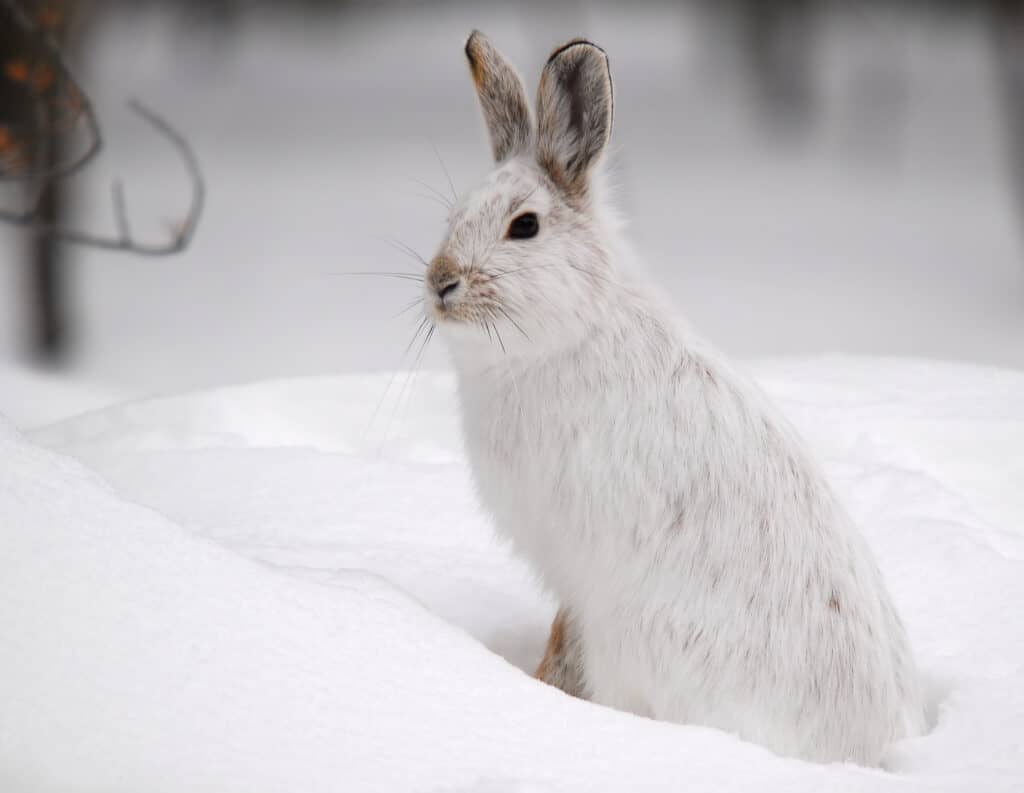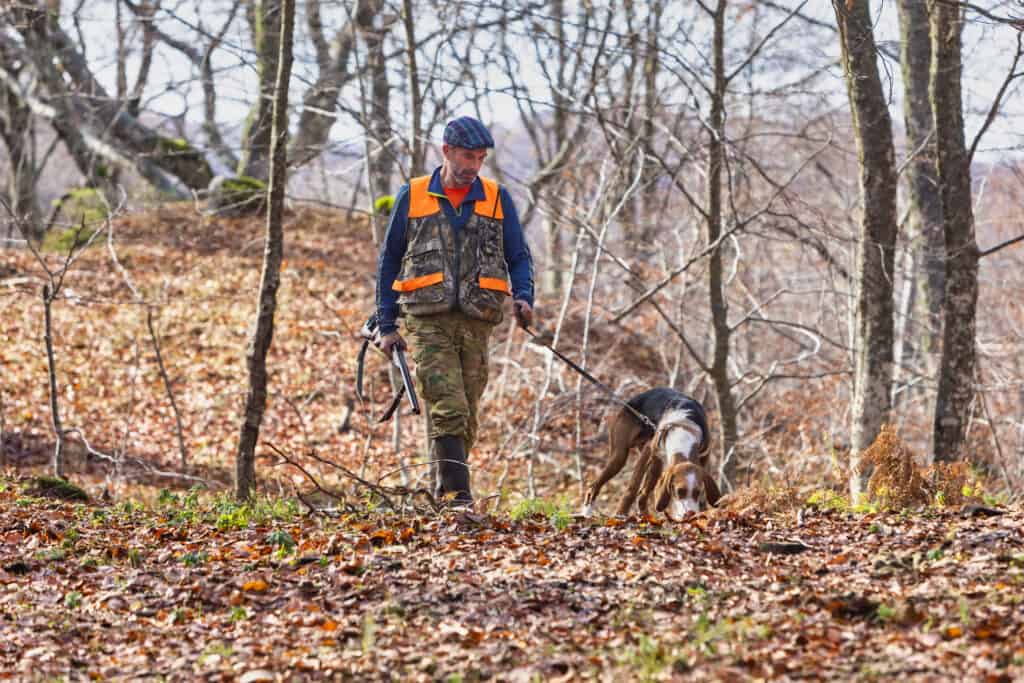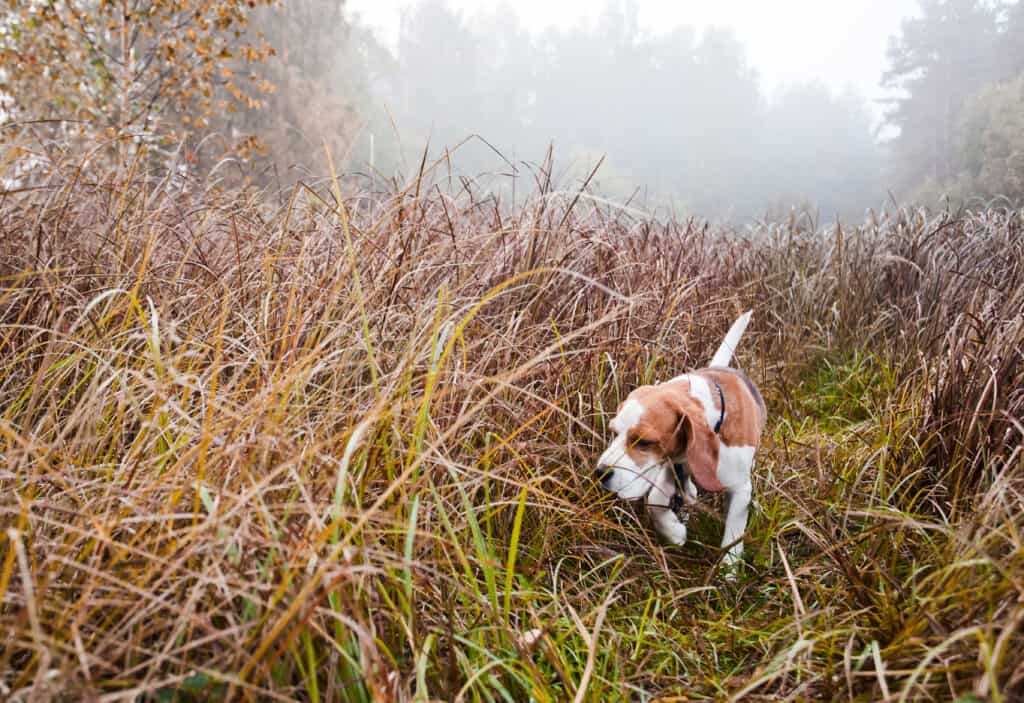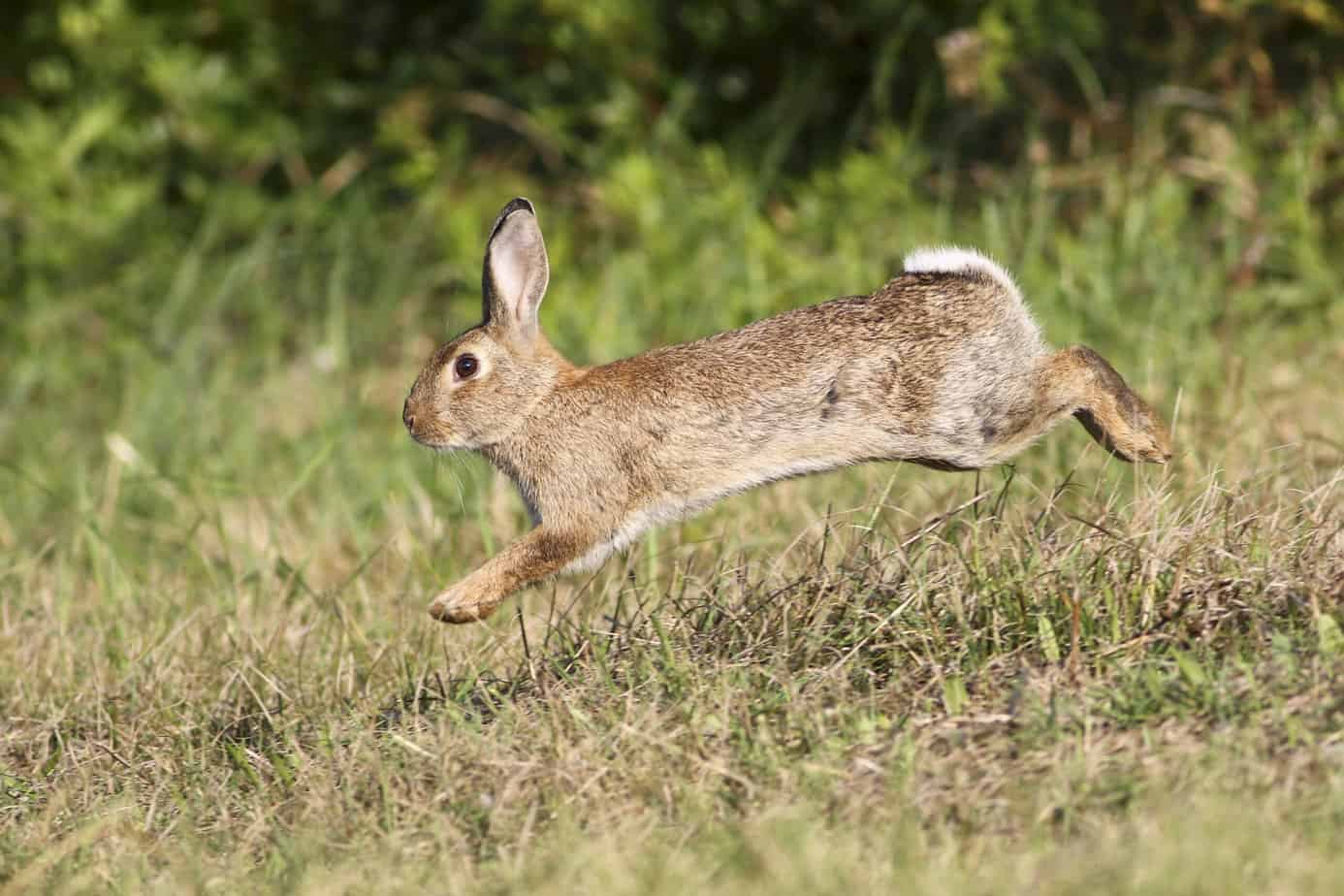Rabbit hunting is a popular pastime, and whether you’re a seasoned pro or a beginner delving into the exciting world of small game hunting, having the right gear is essential for success. In this article, we will discuss our top choices for must-have rabbit hunting gear, making sure that you’re well-prepared for your next adventure out in the field. From proper attire to the right firearms, we’ll cover all the essentials to ensure a safe and enjoyable experience.
One of the key aspects of any successful rabbit hunting trip is the use of appropriate weapons. We highly recommend a 20-gauge shotgun for rabbit hunting, as it’s strong enough to take down a rabbit in one shot, yet light and convenient to carry around. Any larger gauge may result in overkill and cause unnecessary damage to your prey, especially when shooting at close range. Remember, when choosing your firearm, it is crucial to match your weapon to the type of prey you are targeting, ensuring the highest level of effectiveness and safety.
Another crucial aspect of rabbit hunting is the clothing and protective gear you wear. It is important to invest in quality camouflage clothing that allows you to blend in with your surroundings, as well as sturdy footwear to navigate the often challenging terrain. A blaze orange safety vest is also a must-have in some places, as it prevents other hunters from mistaking you for game. Additionally, don’t forget to bring along heavy-duty work gloves, as rabbit territory often teems with thickets, tangles, and thorny brush that can cause discomfort and injury if not properly protected.
Rabbit Hunting Basics
Types of Rabbits
When it comes to rabbit hunting, there are a few species that we commonly target. The most popular of these are cottontail rabbits, which are small, swift, and found across much of North America. On the other hand, jackrabbits are larger and primarily found in the western regions of the continent. Another species sometimes hunted are snowshoe hares, which dwell in colder, snow-covered areas.
Hunting Tactics
No matter which rabbit species we’re hunting, it’s important to use appropriate tactics.
- Shotguns: A 20-gauge shotgun is often recommended, as it is strong enough to take a rabbit down in just one shot and convenient to carry around.
- Still-Hunting: This method involves quietly walking through the rabbits’ habitat, carefully scanning for any movement or signs of their presence.
- Jump Shooting: This approach requires us to be quick and agile, as we try to “jump” the rabbits and shoot as they attempt to escape.
- Hunting with Dogs: Some hunters prefer to use dogs, especially beagles, to help flush out rabbits from their hiding spots.
Habitat and Behavior
Understanding a rabbit’s habitat and behavior is essential to have a successful hunt.
- Cottontail Habitats: Cottontails tend to live in areas with dense, low brush or tall grasses, often near agricultural fields, such as clover or alfalfa. They prefer to hide in thickets and tangles and are most active during morning and evening hours.
- Jackrabbit Habitats: Jackrabbits typically live in open prairies, deserts, and fields featuring short, sparse vegetation. They are known for their amazing speed and ability to leap high into the air.
- Snowshoe Hare Habitats: Snowshoe hares inhabit colder, snowy regions, typically in forests and woodlands. They have large, furry feet that help them move effectively on the snow.

No matter the species of rabbit, it’s important to be well-prepared and informed about their behavior and habitat to enhance our chances of a successful hunt.
Must-Have Firearms and Ammunition
Shotguns
When it comes to shotguns for rabbit hunting, our top preference is a 20-gauge shotgun. It’s powerful enough to take down a rabbit with a single shot and easy to carry around. However, you could also use a 12- or 16-gauge shotgun. We recommend using No. 5 or 6 shells, as they won’t damage the meat too much.
Using a shotgun for rabbit hunting is quite common because it’s great for stalking rabbits and flushing them out from hiding, similar to bird hunting like pheasant or quail.
Rifles
For those of us who prefer rifles, a .22 rifle is often considered the go-to firearm for rabbit hunting. The classic .22 LR is versatile and has likely been the first firearm for many small game hunters. There are a wide variety of .22 rifles to choose from, ranging from vintage models to modern tactical designs.
Rifle hunting offers a different approach than using a shotgun, often requiring hunters to adopt more of a “sit and wait” strategy, akin to deer hunting from a fixed position.
Air Rifles
While not as conventional as shotguns or rifles, air rifles can also be used for rabbit hunting. They might not be as powerful as a 20-gauge shotgun or a .22 rifle, but they can still effectively take down rabbits if used correctly.
To summarize, here are our must-have firearms and ammunition for every rabbit hunter:
- Shotguns:
- 20-gauge shotgun (preferred)
- 12- or 16-gauge shotgun
- No. 5 or 6 shells
- Rifles:
- .22 LR rifle
- Air rifles:
- Suitable for rabbit hunting
Hunting Gear Essentials
Clothing and Footwear
When hunting rabbits, it’s important for us to wear the right clothing and footwear to ensure our comfort and safety. We recommend wearing:
- Boots: A good pair of boots is essential for rabbit hunting. They should be sturdy, waterproof, and provide decent ankle support to help us navigate through rough terrain.
- Thick clothing: To protect ourselves from scratches and bites, we should wear thick, long-sleeved shirts and pants. They also shield us from the cold and keep us warm during the hunt.
- Heavy-duty work gloves: These gloves protect our hands from cuts and scrapes while handling brush or moving through dense vegetation.
Safety Equipment

Safety is a top priority during any hunting trip, and rabbit hunting is no exception. We should always carry the following safety equipment:
- Blaze orange safety vest: Wearing a blaze orange safety vest makes us visible to other hunters, reducing the risk of accidents.
- Safety glasses: These help protect our eyes from potential hazards like flying debris, branches, and dust.
- First aid kit: It’s essential to have a well-stocked first aid kit with us in case of injuries during the hunt.
Additional Accessories
To ensure a successful hunt, we should also consider bringing these helpful accessories:
- Rabbit call: This is a useful tool to help attract rabbits to our location by imitating their natural sounds.
- Binoculars: These can be handy for spotting rabbits in the distance, allowing us to plan our approach.
- Small game hunting license: Most states require a hunting license to hunt rabbits, so it’s important to check the rules and regulations in your area before heading out.
By properly equipping ourselves with the essential clothing, footwear, safety equipment, and accessories, we can greatly improve our rabbit hunting experience and increase our chances of success.
Hunting with Dogs
When hunting rabbits with dogs, there are several key aspects to consider. In this section, we will discuss several points that are essential for a successful rabbit hunt with our furry friends, including the types of hunting dogs and how to train them.
Types of Hunting Dogs

There are a few different types of hunting dogs that work well for rabbit hunting:
- Beagles: Beagles are by far the most popular choice for rabbit hunters. They have incredible scent-tracking abilities, and their small size and energy make them perfect for chasing rabbits through dense terrain.
- Harriers: Harriers are similar to beagles but larger. They are excellent at chasing rabbits, and their endurance allows them to keep up with the fast pace.
For rabbit hunting, we recommend using beagles or harriers, as their speed, endurance, and tracking abilities are well suited for the task. In some instances, hunters might form a small pack of dogs to increase the chances of catching rabbits.
How to Train Hunting Dogs
Training a hunting dog for rabbit hunts requires patience, consistency, and a few essential steps:
- Obedience Training: Before introducing your dog to the field, it is crucial to establish a solid obedience foundation. Teach your dog basic commands such as sit, stay, and heel to ensure your dog listens and follows your instructions during the hunt.
- Developing Hunting Skills: Start teaching your hunting dog to follow rabbit scent trails. You can use rabbit fur, a scent drag or a tame rabbit to develop their scent-tracking abilities. Repeat the training process until your dog gains confidence and starts tracking rabbit scents confidently.
- Socialization: To create an effective rabbit hunting dog pack, socialize your dog with other hunting dogs. This will help them work together during hunts and improve their success.
- Field Training: Once your dog masters the tracking skills, it’s time for real-world practice. Start in controlled environments like fenced-off fields and gradually expose your dog to hunting scenarios. Always provide positive reinforcement to encourage their progress.
Training your hunting dog is essential for successful rabbit hunts with beagles, harriers, or a pack of dogs. Remember to be patient and consistent with the training process, and you’ll create a skilled rabbit hunting companion.
Rabbit Hunting Tips and Techniques
Understanding Rabbit Behavior
It’s crucial that we understand rabbit behavior to increase our chances of success. Rabbits are diurnal, which means they’re most active during the early morning and late afternoon. This is the best time for us to hunt them. As prey animals, they have developed defensive tactics such as running in a zig-zag pattern to evade predators. Familiarizing ourselves with these behaviors will help outsmart them during the hunt.
Scouting the Terrain
Before heading out to hunt, we should scout the terrain to locate ideal rabbit habitats. Look for warrens, which are the burrows where rabbits live, in areas with dense vegetation like blackberry bushes. Keep the wind direction in mind as rabbits have a strong sense of smell. Approaching them upwind will increase the likelihood of detection. Here are some vital points to consider:
- Locate areas with dense vegetation, as rabbits seek cover and food sources there
- Observe the wind direction and approach downwind to avoid alerting rabbits
Strategies for Rabbit Flush
Once we’ve scouted the terrain, it’s time to employ strategies for flushing rabbits out of their hiding spots. One effective strategy is the “stop-and-go” method. Walk slowly, taking 10 feet steps with 30 seconds breaks, and keep repeating the process. This will confuse rabbits, prompting them to move and making them easier targets.
A hunting buddy can also be useful for flushing rabbits. Position yourselves strategically and take turns walking through the heavy cover, forcing rabbits to move out into the open.
Remember:
- Use the “stop-and-go” method to draw rabbits out of hiding
- Hunting with a partner can be effective for flushing rabbits from their cover
Location and Planning
Choosing the Right Hunting Grounds
When planning our rabbit hunting adventure, selecting the proper hunting grounds is crucial. We should search for areas with thick cover, such as hedgerows, brambles, and brushy areas, where rabbits are more likely to hide. While finding spots that are ideal may be easier on public land, we shouldn’t rule out private land. Just make sure to get the landowner’s permission first.
If we’re hunting during deer season or winter months, it’s essential to be aware of other hunters in the area, especially on public land. Cold weather and freezing conditions may offer an added challenge, but they can also mean fewer hunters in the field, thus increasing our chances of a successful rabbit hunt.
In general, here are some factors to consider when choosing hunting grounds:
- Thick cover for rabbit hiding spots
- Public versus private land access
- Potential for overlapping hunting seasons
- Weather conditions
Understanding Rabbit Hunting Seasons
Each state and region has specific rabbit hunting seasons, which we should familiarize ourselves with before hitting the field. Most rabbit hunting seasons occur in the fall and winter months, but specific dates may vary. We can consult our local wildlife agency or state’s hunting regulations for accurate information on rabbit hunting seasons in our area.
By considering factors such as weather, cover options, and overlapping hunting seasons, we can improve our rabbit hunting experience and increase our chances of success in the field. Happy hunting!
Additional Considerations
Health and Safety Precautions
When it comes to rabbit hunting, there are several health and safety precautions that we should all keep in mind. One common concern when handling rabbits is the potential exposure to fleas, which can lead to uncomfortable and persistent itching. To protect ourselves from these pests, we must wear long sleeves and pants while hunting, and consider using insect repellant to deter fleas.
Additionally, when dressing the rabbit after a successful hunt, it’s essential to wear gloves in order to minimize the risk of exposure to diseases or infections, such as Tularemia, which can be transmitted through direct contact with an infected rabbit. Proper field dressing techniques and thorough cooking are crucial in ensuring a safe and delicious meal.
Preparation for Novice Hunters
For those new to rabbit hunting, it’s essential to be prepared and equipped with the right gear and knowledge to increase your chances of success and ensure a safe experience. Here’s a list of basic recommendations to help novice hunters get started:
- Weapon selection: A 20-gauge shotgun is an ideal choice, as it’s powerful enough to take down a rabbit without causing too much damage to the meat. Alternatively, a .22 rifle can also be used.
- Proper clothing and camouflage: Camouflage clothing helps hunters blend in with their surroundings, staying concealed from rabbits. Make sure to wear comfortable and weather-appropriate attire.
- Hunting partner: Having a partner can increase the chances of spotting rabbits and offers assistance in case of any unforeseen situations or emergencies.
- Patience and strategy: Rabbit hunting requires patience. Novice hunters should familiarize themselves with the feeding areas and rabbit droppings. Walk slowly and take breaks, allowing time for rabbits to reveal themselves.
In summary, while venturing into rabbit hunting, it’s crucial to focus on health and safety precautions, as well as arming oneself with useful tips and information. Equipping novice hunters with the right gear, knowledge, and patience will ensure a safe and enjoyable hunting experience.
Final Thoughts
In our journey through rabbit hunting gear, we’ve covered a vast array of must-haves. From the types of firearms and ammunition to the clothing and spotters, it’s important to be well-equipped for a successful rabbit hunt.
We’d like to emphasize the importance of selecting proper firearms, such as a 20-gauge shotgun or a .22 caliber rifle. These options provide the ideal balance of power and precision, ensuring a clean, ethical kill. Never forget the importance of practicing your marksmanship, as this will play a crucial role in your success as a rabbit hunter.
Our choice of camouflaged clothing is essential, as it helps us blend into the rabbit’s natural habitat. Moreover, sturdy boots, gloves, and other protective gear are vital for our comfort and safety when navigating the often thorny terrain rabbits frequent.
Don’t overlook the value of binoculars or spotters to locate rabbit signs – like droppings or trails – or to spot rabbits from afar. This will enable us to plan our approach more carefully, improving our odds of success.
Finally, remember that rabbit hunting is also an opportunity to bond with friends and family. The shared experience of being out in nature and honing our hunting skills can create lasting memories and traditions.
With that said, we wish you the best of luck with your rabbit hunting endeavors. Remember that in the end, success is often a combination of preparation, patience, and skill. So gear up and let the adventure begin!


